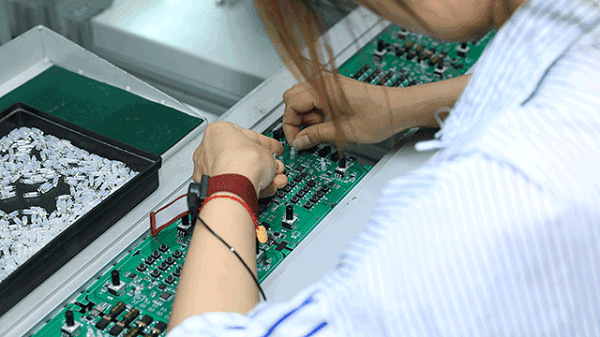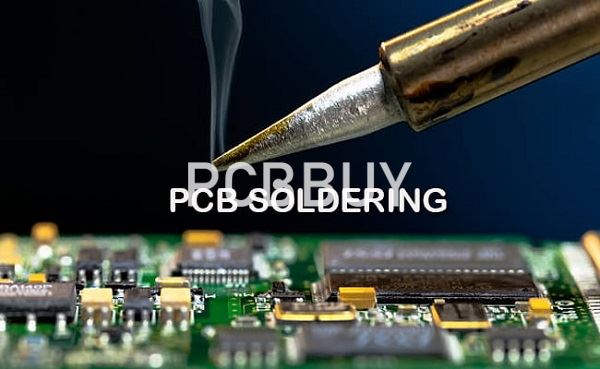5 Soldering Issues in PCB in PCB Manufacturing Process
By:PCBBUY 09/13/2021 09:38

At soldering iron temperature, solder will stick to oxides and contaminants to produce a visually acceptable connection. However, the connection lacks an intermetallic bond and the high temperature degrades bonds inside components. The altered bonds change electrical values and shorten component life. In just a few seconds of improper application, a soldering iron can shorten the life expectancy of components by decades.
In this passage, we will tell you 5 soldering issues during the manufacturing process. If you are facing the challenges of PCB soldering, please check and read the content we prepare for more information.
If you want to order PCB product, please check and custom your order online.

What are the main 5 Soldering Issues in PCB?
What is Solder Bridging?
As the name implies, solder bridging is akin to having a bridge of solder built between two adjacent component pads. It usually happens on fine-pitch SMD components, such as a microcontroller on an LQFP package. When left unspotted, the short circuit created by the solder bridge can cause the circuit to malfunction and, in some cases, damage the shorted components.
The issue can be aggravated if the solder paste mask is absent or only covers a narrow area between the pads. This enables the solder paste to rest on the substrate, which causes solder bridges to easily form.
Sometimes, solder bridging is caused by stencil thickness, which affects the volume of solder paste applied onto the pad. A thicker stencil will lead to more solder paste on the pads, which may cause the paste to overflow from one pad to another.
What is Soldering Excess Solder?
Excess PCB solder on printed circuit boards is a big challenge that manufacturers face when producing these boards. If a board PCB passes through a wave soldering machine but takes too much solder, they'll be an excess solder build-up. Excess solder on a printed circuit board will eventually have an impact on its functionality.
Just like Lifted Components and Solder Bridging, there several major causes of excessive solder. Some of them include the following:
· We cannot use Failure to orient the same type components in the same direction during wave soldering.
· Employing the use of incorrect lengths to pad ratio when designing the printed circuit board.
· Conveyor belt running fast on the manufacturer's side.
· For you to avoid cases of too much solder, it's advisable not to get too enthusiastic to the extent of applying a lot of solder on the pins.
What is Heat sink?
The arrival of solid-state components (primarily leaded resistors and capacitors in the early days) meant that the active elements of the circuit were exposed to soldering iron heat. An epidemic of component failures followed until the heat-sensitive nature of these new components was recognized. The solution was the use of metal clamps (“heat sinks”) to protect the component. The clamps were fastened to the lead near the component body. Heat flowed from the iron towards the body but was absorbed (“sunk”) by the clamp. Component failures promptly plummeted.
Reliability also benefited from machine soldering which, at the time, was entirely by wave. Wave soldering and, more recently, surface mount reflow subject components to much lower peak temperatures. Heat damage is primarily a hand soldering issue.
What is Tombstoning?
This happens when a component only connects to one pad and lifts away from the other with no connection. This defect can occur due to improper pad design. For example, if one SMT component has two pads and one is significantly larger than the other it will heat up more quickly. In solder reflow when the pad heats more quickly the solder there will melt first, bonding that pad and causing the component to rise on the other side and fail to connect.
What is Cold Joints?
Cold joints occur when the soldering iron is at a low temperature or the joint wasn’t heated for long enough. Cold joints are messy, do not last as long, and do not work as well. Sometimes this even limits the functionality of the PCB.
The best way to avoid this problem is to exercise proper soldering technique and become certified in IPC J-STD-001, the electrical soldering standard. Or, of course, you could outsource your PCB layout to an expert.
What is process of PCB soldering?
Today, the most common type of solder is lead-free (Sn-Cu) rosin core solder. Unless your assembler is working a one-off board or you are assembling your own board, the PCBA will not be soldered by hand. Instead, it will go through an automated process:
· Wave soldering: Used for through-hole components
· Reflow soldering: Used for SMT components in a reflow oven
· Selective soldering: Used when a through-hole component might be damaged by high heat or is unsuitable for the wave and reflow processes
Industry Category











